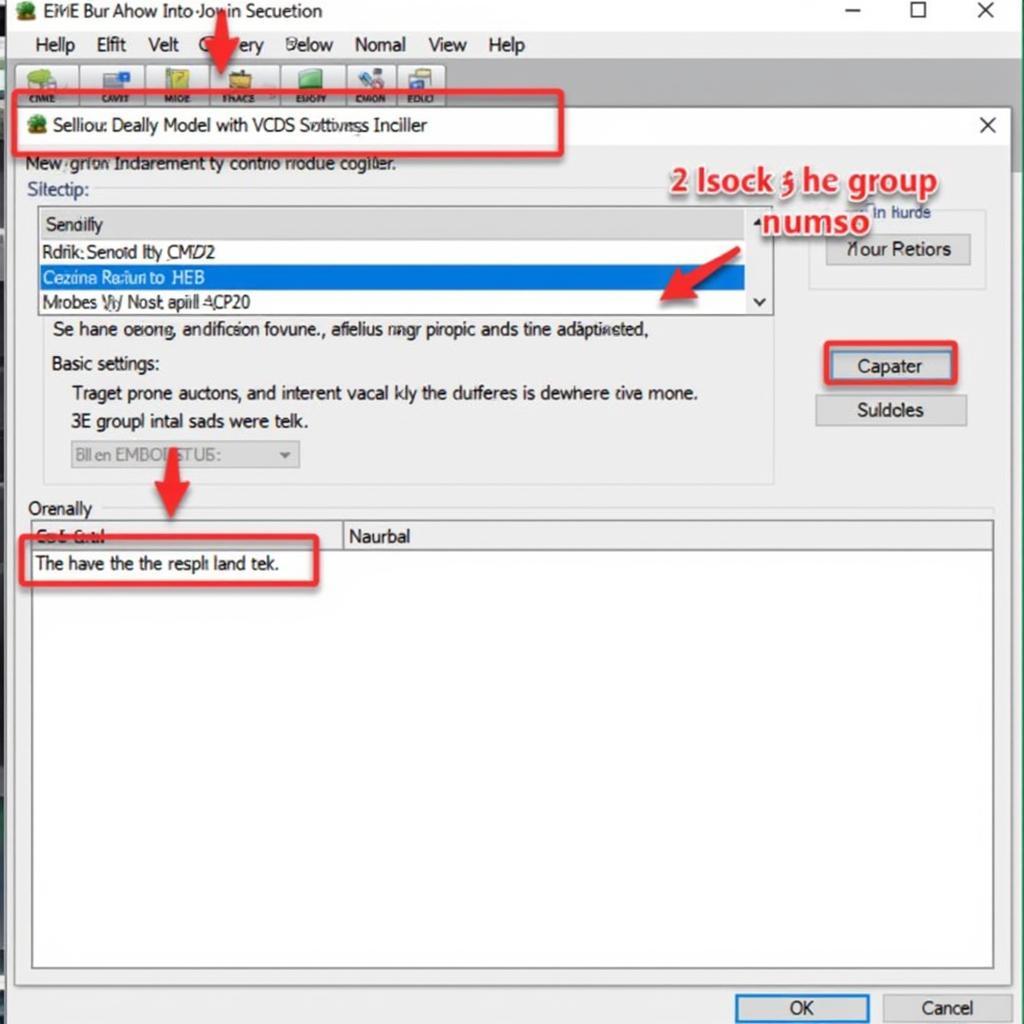Your cart is currently empty!

Mastering VCDS Variable Intake Manifold Adaptation
VCDS variable intake manifold adaptation is a crucial process for maintaining optimal engine performance in many Volkswagen, Audi, Seat, and Skoda vehicles. This adaptation process allows the engine control unit (ECU) to fine-tune the intake manifold flaps, ensuring the correct air-fuel mixture for different driving conditions. A malfunctioning adaptation can lead to various issues, from reduced fuel economy to rough idling and even decreased power. This article will provide a comprehensive guide on understanding, diagnosing, and performing this adaptation using VCDS.
Understanding the Intake Manifold and Its Adaptation
The intake manifold is a critical component of your engine’s air intake system. It distributes air from the throttle body to the intake ports of each cylinder. Many modern engines utilize variable intake manifolds equipped with flaps that adjust the length of the intake runners. These flaps are controlled by the ECU and optimize airflow for different engine speeds and loads. VCDS variable intake manifold adaptation allows the ECU to learn the precise position of these flaps, ensuring optimal performance.
Why is VCDS Variable Intake Manifold Adaptation Important?
Over time, the intake manifold flaps can wear or become clogged with carbon deposits. This can affect their movement and prevent them from sealing properly. VCDS variable intake manifold adaptation compensates for these changes, ensuring the engine continues to run smoothly. Without proper adaptation, the engine might experience drivability issues and reduced efficiency.
Diagnosing Intake Manifold Adaptation Issues
Several symptoms can indicate a problem with the intake manifold adaptation. These include:
- Rough idling
- Hesitation or stumbling during acceleration
- Reduced fuel economy
- Check engine light (CEL) illuminated with related fault codes
Using VCDS, you can diagnose these issues by checking for specific fault codes and measuring values related to the intake manifold. This powerful diagnostic tool allows you to access the ECU and retrieve valuable data that can pinpoint the source of the problem.
Common Fault Codes Related to Intake Manifold Adaptation
Some common fault codes that might indicate an issue with the intake manifold adaptation include:
- P2004: Intake Manifold Runner Control Stuck Open (Bank 1)
- P2005: Intake Manifold Runner Control Stuck Closed (Bank 1)
- P2006: Intake Manifold Runner Control Stuck Open (Bank 2)
- P2007: Intake Manifold Runner Control Stuck Closed (Bank 2)
These codes can often be resolved by performing a VCDS variable intake manifold adaptation. However, if the problem persists, it might indicate a mechanical issue with the intake manifold flaps or the actuator motor.
Performing VCDS Variable Intake Manifold Adaptation
Before performing the adaptation, ensure the engine is at operating temperature and the ignition is on. Here’s a step-by-step guide using VCDS:
- Connect your VCDS interface to the vehicle’s OBD-II port.
- Open the VCDS software and select the correct vehicle model.
- Go to “Select Control Module”.
- Choose “Engine” (01-Engine).
- Select “Basic Settings” (04-Basic Settings).
- In the “Group” field, enter the group number specific to your engine (consult your vehicle’s repair manual or online resources).
- Click “Go” and follow the on-screen instructions.
- Once the adaptation is complete, clear any fault codes related to the intake manifold.
 VCDS Software Interface for Intake Manifold Adaptation
VCDS Software Interface for Intake Manifold Adaptation
“A successful adaptation is crucial for maintaining the balance of your engine’s performance,” says John Miller, a seasoned automotive engineer specializing in VW/Audi vehicles. “It’s like tuning a musical instrument – ensuring each component works in harmony for optimal output.”
Tips for Successful VCDS Variable Intake Manifold Adaptation
- Ensure the engine is running smoothly before starting the adaptation.
- Double-check the group number specific to your engine.
- Follow the on-screen instructions carefully.
- Clear any fault codes after the adaptation is complete.
“Regular maintenance and timely adaptations can prevent major issues down the line,” adds Sarah Chen, a certified VCDS technician with over 15 years of experience. “Think of it as preventative medicine for your car’s engine, ensuring its longevity and performance.”
Conclusion
VCDS variable intake manifold adaptation is a vital procedure for maintaining optimal engine performance. Understanding how the intake manifold works and how to use VCDS to diagnose and perform the adaptation can help you avoid costly repairs and keep your vehicle running smoothly. For further assistance or specialized support, connect with us at +1 (641) 206-8880 and our email address: vcdstool@gmail.com or visit our office at 6719 W 70th Ave, Arvada, CO 80003, USA. You can also visit our website at vcdstool.com for more information and resources.
FAQ
- How often should I perform a VCDS variable intake manifold adaptation? It’s generally recommended to perform the adaptation after cleaning the throttle body or intake manifold, or if you experience any of the symptoms mentioned above.
- Can I perform the adaptation without VCDS? No, VCDS or a similar diagnostic tool is required to access the necessary ECU functions.
- What happens if the adaptation fails? If the adaptation fails, it might indicate a mechanical problem with the intake manifold or a problem with the ECU.
- Will the adaptation improve my fuel economy? A successful adaptation can contribute to improved fuel economy by optimizing the air-fuel mixture.
- Is VCDS variable intake manifold adaptation the same for all VAG vehicles? No, the specific procedures and group numbers might vary depending on the engine code and model year. Always consult your vehicle’s repair manual or reliable online resources.
- What should I do if the fault codes return after the adaptation? If the fault codes return, it’s essential to further diagnose the issue. It might indicate a mechanical problem that requires repair.
- Can I damage my engine by performing the adaptation incorrectly? While unlikely, it’s crucial to follow the correct procedure and use the correct group number to avoid potential issues. If you’re unsure, consult a qualified technician.
by
Tags:
Leave a Reply